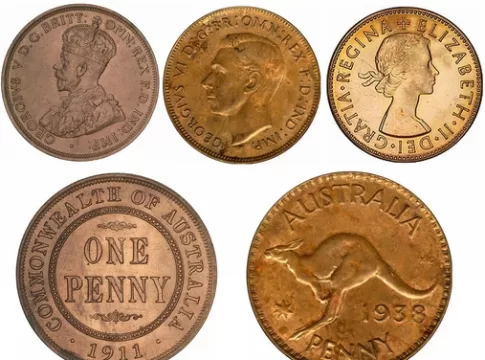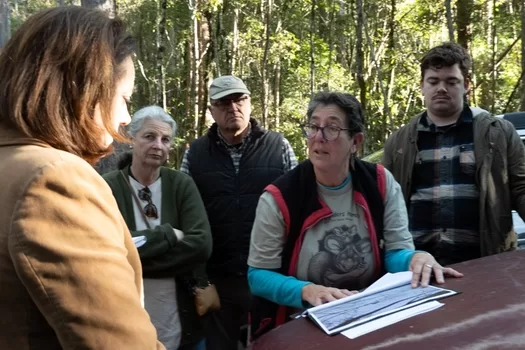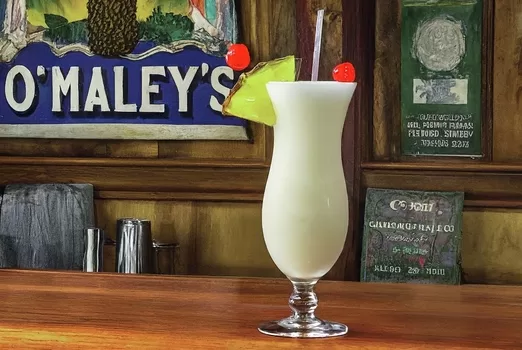The Australian penny is a coin that was used in Australia prior to decimal currency in 1966. They are no longer in circulation but remain a collectible item for numismatists and collectors of vintage coins.
The story of Australian pre-decimal pennies begins with the establishment of the Commonwealth of Australia in 1901. The transition from colonial to federal governance necessitated the creation of a national currency. Prior to this, the colonies used a mix of British coins and locally produced tokens. The Australian penny, introduced in 1911, was part of the broader effort to unify the nation’s currency system.
Advertisement:
The Australian Penny
The first Australian pennies were minted in the United Kingdom, at the Royal Mint in London and the Heaton Mint in Birmingham, before local production commenced at the Melbourne Mint in 1916. Over the years, the Sydney and Perth Mints also contributed to penny production, ensuring a steady supply of coins to meet the growing demands of a developing nation.
The Australian Penny was worth one-twelfth of a shilling, or 1/240 of a pound. They are 30.8 mm in diameter and weighs 9.45 g. Their composition is Bronze, consisting of 97% copper, 2.5% zinc, 0.5% tin.
Search the Pre-Decimal Coins on eBay here
Design Evolution
The design of the Australian pre-decimal penny evolved over the decades, reflecting changes in monarchs and artistic trends. The obverse of the coin typically featured a portrait of the reigning British monarch, while the reverse showcased distinctly Australian motifs.
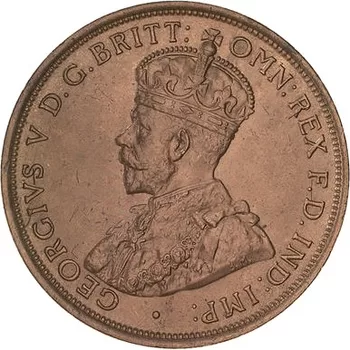
King Edward VII Era (1911-1936):
The first pennies bore the likeness of King Edward VII on the obverse, designed by Bertram Mackennal.
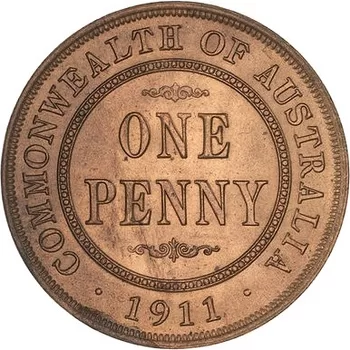

The reverse featured a simple yet elegant design with the word “AUSTRALIA” at the top, the denomination “ONE PENNY” in the center, and the year of minting at the bottom, all within a beaded circle.
This design remained largely unchanged until the end of Edward VII’s reign.
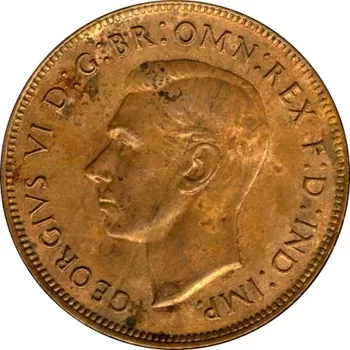

King George VI Era (1937-1952):
The ascension of King George VI brought a new obverse design by Thomas H. Paget, depicting a left-facing bust of the king.
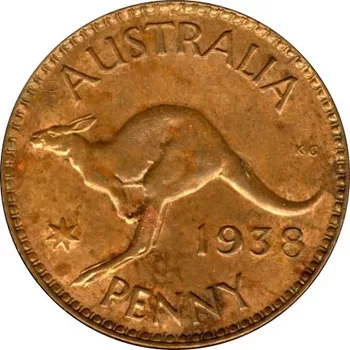

The reverse design, created by George Kruger Gray, featured a bounding kangaroo, an iconic Australian symbol, which became a beloved motif on subsequent pennies.
Queen Elizabeth II Era (1953-1964):
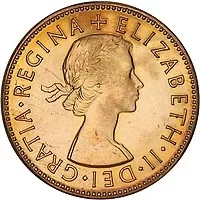

Upon Queen Elizabeth II’s accession, the obverse was updated to include her right-facing portrait by Mary Gillick.
The reverse design remained the same, maintaining the familiar kangaroo motif.
This era marked the final phase of the pre-decimal pennies before the transition to the decimal system in 1966.
Numismatic Significance
Australian pre-decimal pennies are highly prized by collectors for their historical value, aesthetic appeal, and relative rarity. Certain years and mint marks are particularly sought after, such as the 1925 penny, minted in low quantities, and the elusive 1930 penny, which is considered one of the most valuable Australian coins due to its scarcity.
Collectors also appreciate variations in design details, errors, and the condition of the coins. High-grade specimens, free from wear and with clear strikes, command significant premiums in the market. The study of these coins provides insights into the minting processes, economic conditions, and artistic sensibilities of the periods in which they were produced.
Advertisement:
What are the most collectible years of the Australian penny?
The rarity of Australian pennies can vary depending on factors such as mintage figures (scroll down), historical events, and collector demand.
While the 1930 penny is the most famous and sought-after due to its extreme rarity, there are several other years that are considered rare and valuable in Australian penny collecting. Some of the most collectible years of the Australian penny include:
1930: The 1930 penny is the rarest of all Australian pennies. It is highly sought after by collectors and commands a premium price.
1946 Y. (Dot) and 1946 Y. (Dot) Penny Overdate Varieties: Some 1946 pennies were minted with a dot after the date, creating a rare overdate variety. These are highly collectible.
1925: The 1925 penny is also considered rare, with a relatively low mintage. It is highly valued by collectors.
1937 Pattern Penny: Only 12 pennies were minted in 1937 to test the flying kangaroo as Australia’s new penny design in 1937 to coincide with Edward’s coronation. The Royal Mint London prepared the master dies and struck prototypes but plans were scuttled when King Edward VIII abdicated in 1936.
1933/32 Overdate: The 1933/32 overdate variety is another rare and valuable penny in Australian coin collecting.
1946 (Proof Issue): In 1946, a limited number of proof pennies were struck. These proof coins are highly sought after and can be quite valuable.
1942 and 1942/41 Overdate: The 1942 penny had a limited mintage, and some were overdated to 1942/41. Both are sought after by collectors.
1954 Melbourne Mint (Proof Issue): In 1954, a small number of proof pennies were struck at the Melbourne Mint, making them highly collectible.
1935: The 1935 penny is another year with limited mintage, and it is considered rare and valuable.
1943 S: The 1943 S penny is notable because it was struck at the San Francisco Mint during World War II for circulation in Australia.
Keep in mind that the value of these rare penny dates can vary greatly depending on their condition, with uncirculated and well-preserved coins typically commanding higher prices. It’s essential to consult with coin experts or reputable dealers to assess the value and authenticity of any rare Australian pennies you may encounter or wish to collect.
Advertisement:
Australian Penny mintage, mint marks, monarchs, etc
| Year | Mint | Variety | Mintage | Notes | Monarch |
| 1911 | London | 3,768,000 | King George V | ||
| 1912 | Heaton | 3,600,000 | “ | ||
| 1913 | London | 2,520,000 | “ | ||
| 1914 | London | 720,000 | “ | ||
| 1915 | London | 960,000 | “ | ||
| Heaton | 1,320,000 | H mint mark | “ | ||
| 1916 | Calcutta | 3,324,000 | I mint mark | “ | |
| 1917 | Calcutta | 6,240,000 | “ | “ | |
| 1918 | Calcutta | 1,200,000 | “ | “ | |
| 1919 | Melbourne | No dot | 5,810,160 | Date varieties exist | “ |
| Melbourne | Dot below bottom scroll | “ | Date varieties exist | “ | |
| Melbourne | Double dot | Rare | Rare | “ | |
| 1920 | Melbourne | 9,041,600 | “ | ||
| Melbourne | Dot below bottom scroll | ” | Rare | “ | |
| Sydney | Dot above bottom scroll | Ext. Rare | 2 specimens known | “ | |
| Melbourne | Dot below bottom scroll | Common | “ | ||
| “ | Double dot | Rare | “ | ||
| Sydney | Dot above bottom scroll | Scarce | “ | ||
| Melbourne | Dot above top scroll | Rare | “ | ||
| 1921 | Melbourne | 7,438,320 | “ | ||
| 1922 | Melbourne | 12,697,440 | “ | ||
| Perth | Scarce | 20% | “ | ||
| 1923 | Melbourne | 5,654,400 | “ | ||
| 1924 | Melb & Syd | 4,665,840 | “ | ||
| “ | Filled 4 | “ | Broken/worn die | “ | |
| Sydney | Rare | “ | |||
| 1925 | Melbourne | 117,000 | “ | ||
| 1926 | “ | 1,860,000 | “ | ||
| 1927 | “ | 4,922,450 | “ | ||
| “ | Rare | “ | |||
| 1928 | “ | 3,038,400 | “ | ||
| 1929 | “ | 2,599,200 | “ | ||
| 1930 | “ | Ext. Rare | About 1600 | “ | |
| “ | Ext. Rare | ||||
| 1931 | “ | Final 1 misaligned | 494,400 | “ | |
| “ | Final 1 misaligned | Ext. Rare | Much rarer than 1930 | “ | |
| “ | Rare | Not as rare as 2A | |||
| 1932 | “ | 2,116,800 | “ | ||
| 1933 | “ | 5,817,600 | “ | ||
| “ | 1933/2 overdate | Scarce | “ | ||
| 1934 | “ | 5,808,100 | “ | ||
| 1935 | “ | 3,724,900 | “ | ||
| 1936 | “ | 9,890,400 | “ | ||
| 1937 | London | 12 | Patterns only | King George VI | |
| 1938 | Melbourne | 5,552,650 | “ | ||
| 1939 | “ | 6,940,000 | “ | ||
| 1940 | Melbourne | 5,188,800 | “ | ||
| Perth | “ | K.G mint mark | “ | ||
| 1941 | Melbourne | 14,382,800 | “ | ||
| Perth | Common | K.G | “ | ||
| “ | Common | Y. mint mark | “ | ||
| 1942 | “ | 21,244,800 | Y. | “ | |
| Bombay | I and .PENNY. | Common | “ | ||
| “ | .PENNY. | Scarce | “ | ||
| 1943 | Melbourne | 53,198,400 | “ | ||
| Perth | Common | Y. | “ | ||
| Bombay | I and .PENNY. | Scarce | Long denticles | “ | |
| “ | I and .PENNY. | Common | Short denticles | “ | |
| 1944 | Melbourne | 29,942,000 | “ | ||
| Perth | Common | Y. | “ | ||
| 1945 | “ | 15,172,806 | Y. | “ | |
| 1946 | Melbourne | 240,000 | Scarce | “ | |
| 1947 | “ | 11,174,400 | “ | ||
| Perth | Common | Y. | “ | ||
| 1948 | Melbourne | 28,150,000 | “ | ||
| Perth | Common | Y. | “ | ||
| 1949 | Melbourne | 27,064,800 | “ | ||
| 1950 | “ | 57,846,800 | “ | ||
| Perth | Common | Y. | “ | ||
| 1951 | Melbourne | 52,128,000 | “ | ||
| Perth | Common | Y. | “ | ||
| London | Common | PL | “ | ||
| 1952 | Melbourne | 57,922,000 | “ | ||
| Perth | Several date varieties | Common | A. | “ | |
| “ | Common | A. | “ | ||
| 1953 | Melbourne | 13,138,816 | Queen Elizabeth II | ||
| “ | Rare | Sans-serif 5 | “ | ||
| Perth | Common | A. | “ | ||
| 1954 | No coins minted | ||||
| 1955 | Melbourne | 17,447,101 | “ | ||
| Perth | 5 5 | Common | Y. | “ | |
| Perth | 55 | Common | Y. | “ | |
| Perth | 5 5 | Rare | Y. | “ | |
| 1956 | Melbourne | 25,994,917 | “ | ||
| Perth | Common | Y. | “ | ||
| “ | Common | Y. | “ | ||
| 1957 | “ | 5 7 | Scarce | Y. | “ |
| “ | 57 | 15,979,112 | Y. | “ | |
| 1958 | Melbourne | 24,443,334 | “ | ||
| Perth | Common | Y. | “ | ||
| 1959 | Melbourne | 16,048,136 | “ | ||
| Perth | Common | Y. | “ | ||
| 1960 | “ | 20,516,230 | Y. | “ | |
| 1961 | “ | 30,608,240 | Y. | “ | |
| 1962 | “ | 34,852,664 | Y. | “ | |
| 1963 | “ | 10,259,660 | Y. | “ | |
| 1964 | Melbourne | 64,590,000 | “ | ||
| Perth | Common | Y. | “ |
Australian Pre-Decimal Pennies: A Journey Through History and Heritage
Australian pennies were minted from 1911 until Australia adopted the decimal currency system in 1966. After the introduction of decimal currency, the penny was phased out and replaced by the cent, with 100 cents being equivalent to 1 Australian dollar.
Beyond their monetary value, Australian pre-decimal pennies hold a special place in the country’s cultural and historical narrative. They were everyday objects that passed through countless hands, bearing witness to the lives of ordinary Australians. These coins have been found in various historical contexts, from archaeological digs to personal collections, each telling a unique story.
The transition to decimal currency in 1966 marked the end of an era, but pre-decimal pennies remain cherished reminders of Australia’s journey from a collection of colonies to a unified, independent nation. They evoke memories of simpler times and are often passed down through generations as family heirlooms.
Search the Pre-Decimal Coins on eBay here
Further Reading
Pirate Guide to Collecting Australian Coins: 2023/2024 Edition, November 2, 2023 by Damian Walker
Renniks Australian Coin & Banknote Values 31st Edition Hardcover
A Guide Book of United States Coins 2022 75th Edition Spiral-bound by Garrett, Jeff, Bowers
Paper Money – North America – Australia – Oceania: COLOR PHOTOGRAPHY Paper money – Old and Rare Banknote (Banknotes of the world)
Related stories
Collecting 1937 & 1938 Australian Crown coins
The story of the NSW Rum Corp, Holey Dollar and Dump coins
Numismatics: Fake Coins to Watch For
Perth Mint is known for its exquisite numismatic coins
Heads or tails? His Majesty King Charles III new coin effigy
Police Ephemera ° The value of Victorian reward posters
‘Central Bank Digital Currency’ is a new digital form of money issued by RBA
What are the world’s largest and famous gold nuggets?
The comments section is open. Do you collect Australian pennies and are you seeking a particular coin?


